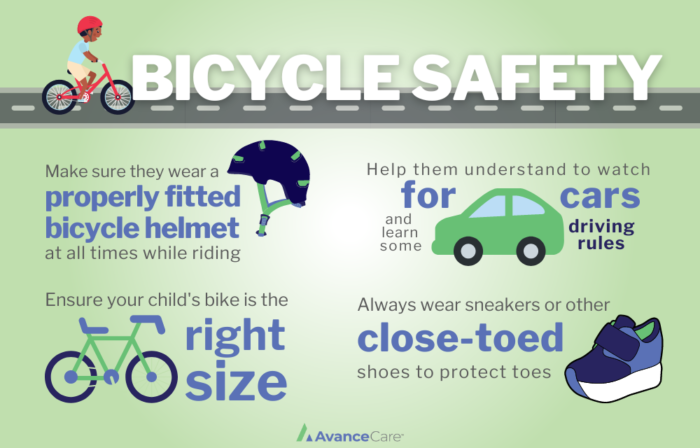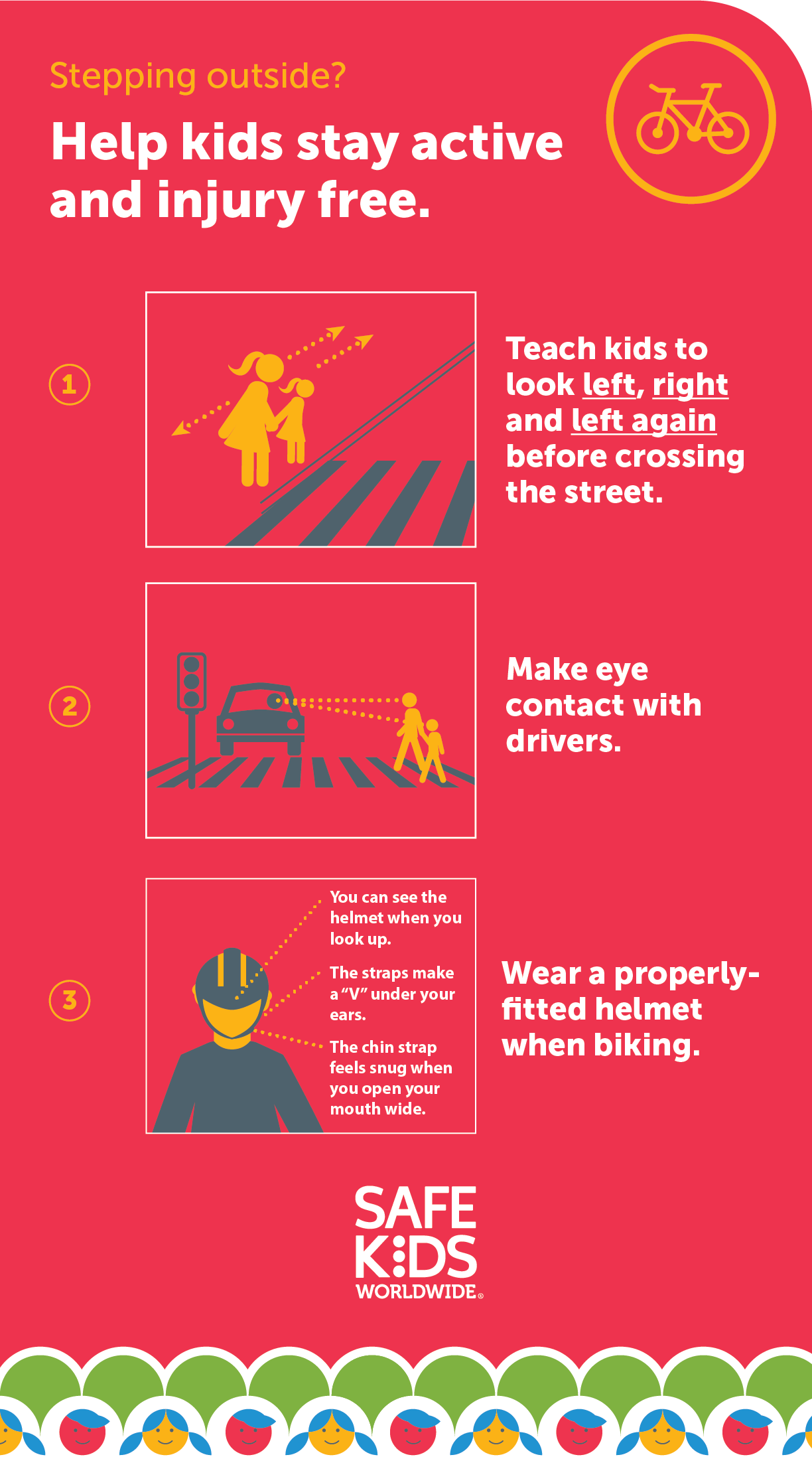Teaching your kids to ride a bike is an exciting milestone, but it can also feel a bit overwhelming. You want your child to enjoy the freedom of cycling while staying safe every step of the way.
What if you could make this learning process smoother and more secure? You’ll discover simple, effective tips to help your child gain confidence on two wheels without unnecessary risks. Keep reading to unlock the secrets that will make biking fun and safe for your little rider.
Choosing The Right Bike
Choosing the right bike is the first step to teach kids how to ride safely. A bike that fits well helps children balance and control better. It makes learning easier and more fun. Parents should focus on size, safety, and comfort when picking a bike. These factors keep kids safe and confident on the road or in the park.
Selecting The Correct Size
The bike size must match the child’s height and leg length. A bike too big or too small can cause accidents. Kids should sit on the seat and touch the ground with their feet. Their knees should bend slightly when pedaling. Check the bike’s frame size and wheel diameter to ensure a good fit. Proper size helps children ride with more control and less fear.
Checking Safety Features
Look for bikes with reliable brakes. Both hand brakes and coaster brakes are common for kids. Make sure brakes work smoothly and stop the bike quickly. Reflectors or lights on the bike increase visibility. Tires with good grip prevent slipping on wet or rough surfaces. Avoid bikes with sharp edges or loose parts to reduce injury risks.
Adjusting For Comfort
Adjust the seat height so the child can reach pedals comfortably. Handlebars should be easy to hold without stretching. Soft grips reduce hand fatigue during rides. Check the bike’s weight; it should be light enough for the child to handle. Comfortable bikes encourage longer practice and build confidence. Make small adjustments as the child grows for ongoing comfort.

Credit: www.avancecare.com
Essential Safety Gear
Essential safety gear protects kids while they learn to ride bikes. Proper equipment reduces risks and builds confidence. Teaching children to use the right gear makes biking safer and more fun. Parents should focus on helmets, pads, and clothing that improve visibility.
Picking A Proper Helmet
Choose a helmet that fits snugly without wobbling. It should cover the forehead and sit level on the head. Look for helmets with a safety certification sticker inside. Always fasten the chin strap securely but comfortably. Replace helmets after any crash or impact.
Using Pads And Reflectors
Knee and elbow pads protect against scrapes and bruises. Wrist guards can prevent wrist injuries during falls. Reflectors on the bike and pads increase visibility in low light. Bright or light-colored reflectors work best. Check that all pads fit well and stay in place.
Dressing For Visibility
Bright clothing helps drivers and others see kids easily. Use neon or fluorescent colors during the day. At dusk or dawn, add reflective strips or vests. Avoid dark or dull clothes that blend into the background. Proper visibility gear lowers the chance of accidents.
Safe Practice Areas
Choosing the right place for kids to practice bicycling is very important. Safe practice areas help children learn without danger. These places allow kids to focus on balancing and steering. They also make learning fun and stress-free.
Parents and teachers must find spots with little or no traffic. These areas reduce the risk of accidents. Kids feel more confident and relaxed when they are safe.
Finding Traffic-free Zones
Look for streets that have no cars or very few vehicles. Dead-end roads or quiet neighborhood streets are good choices. These zones give kids space to ride without worrying about traffic. Make sure the pavement is smooth and clear of obstacles.
Using Parks And Playgrounds
Parks and playgrounds offer safe places for biking practice. Paths in parks are often wide and well-maintained. Playgrounds have open spaces where kids can ride freely. These areas also let children enjoy nature while learning.
Avoiding Busy Streets
Busy streets have many cars and fast traffic. These places are not safe for beginners. Avoid main roads and intersections until kids are skilled riders. Staying away from busy streets lowers the chance of accidents.

Credit: www.thebikegarage.ca
Basic Riding Skills
Teaching kids the basic riding skills builds their confidence and safety. These skills form the foundation for a smooth riding experience. Practice helps children control their bike and enjoy riding more.
Focus on simple steps first. Use clear instructions. Make learning fun and stress-free.
Balancing And Steering
Start with balance. Let kids practice standing on the bike while holding it. Use a flat, open area. Encourage them to lean slightly to steer. Small movements help keep control. Balance is the key to safe riding.
Starting And Stopping
Teach kids how to start by pushing off with one foot. Show them how to place both feet on the pedals. Practice stopping by squeezing the brakes gently. Remind them to look ahead before they stop. Smooth starts and stops prevent falls.
Turning And Signaling
Practice turning slowly in wide circles. Teach kids to lean with the bike during turns. Explain hand signals for turning left and right. Use simple signs they can remember easily. Signaling helps others know their moves.
Road Rules For Kids
Teaching kids the rules of the road is key to their safety on a bike. Kids must learn how to behave around cars, signs, and other road users. Clear rules help them avoid accidents and build good habits early.
Start with simple concepts and practice often. Use real-life examples during bike rides. Make sure your child understands each rule before moving on.
Understanding Traffic Signals
Traffic signals tell when to stop, go, or wait. Red means stop. Green means go. Yellow means slow down and prepare to stop. Teach kids to watch signals closely.
Explain the meaning of pedestrian signals too. A walking person means it is safe to cross. A hand means stop. Practice watching signals during walks or bike rides.
Crossing Streets Safely
Always stop at the curb or edge of the road. Look left, right, and left again before crossing. Listen for cars and other vehicles. Cross only when it is clear and safe.
Use crosswalks and pedestrian signals. Teach kids to walk their bike across busy roads. Remind them to stay alert and not rush.
Riding With Caution
Ride on the right side of the road, with traffic. Keep a safe distance from parked cars and other obstacles. Slow down near driveways and intersections.
Use hand signals to show turns or stops. Look behind before changing lanes or turning. Always wear a helmet and bright clothes for visibility.
Building Confidence
Building confidence is key to helping kids learn to ride a bike safely. When children feel sure of themselves, they try harder and enjoy the process. Confidence grows step by step. It needs patience and support from parents or teachers. Creating a positive learning space helps kids believe they can succeed.
Encouraging Practice Sessions
Regular practice helps kids get used to the bike. Short, fun sessions keep their interest high. Let them ride on soft grass or quiet paths. Offer praise for their efforts, not just results. Practice builds skills and trust in their own abilities.
Celebrating Small Wins
Every little success matters. Celebrate when a child pedals a few feet or balances well. Positive feedback boosts their spirit. It shows progress is important, not perfection. Small wins make kids eager to try again.
Handling Falls And Mistakes
Falling is part of learning to ride. Teach kids to stay calm after a fall. Help them understand mistakes help improve. Encourage them to get up and try again. Showing support turns falls into valuable lessons.
Parental Supervision Tips
Parental supervision plays a key role in teaching kids to ride bicycles safely. Parents guide children through challenges and keep them safe. Close attention helps avoid accidents and builds confidence in young riders. Safe biking habits start at home with active supervision and clear rules.
Staying Close And Alert
Stay near your child during every bike ride. Be ready to react quickly if they lose balance or face danger. Watch the road, other vehicles, and pedestrians. Avoid distractions like phones or conversations. Your full attention helps prevent accidents and gives your child confidence.
Setting Clear Boundaries
Explain where your child can ride their bike safely. Choose quiet streets, parks, or bike paths. Teach limits on speed and distance from home. Make sure your child understands these rules clearly. Boundaries help kids stay in safe areas and avoid risky situations.
Modeling Safe Behavior
Show your child how to ride safely by example. Wear a helmet and follow traffic rules. Use hand signals and stop at intersections. Your actions teach respect for safety and others on the road. Kids learn best by watching their parents.

Credit: www.safekids.org
Frequently Asked Questions
How To Teach Kids To Balance On A Bicycle?
Start with a balance bike or remove pedals from a regular bike. Encourage kids to glide and balance. Practice on flat, smooth surfaces to build confidence before introducing pedaling.
What Safety Gear Is Essential For Kids Bicycling?
Always use a properly fitted helmet. Add knee and elbow pads for extra protection. Bright clothing and reflective gear increase visibility during rides.
When Should Kids Start Learning To Ride A Bike?
Most children start between ages 3 and 7. It depends on their coordination and interest. Begin with balance skills, then progress to pedaling and steering.
How To Choose The Right Bike Size For Kids?
Select a bike where kids can touch the ground with their feet. Measure their inseam and check manufacturer sizing charts. A proper fit ensures better control and safety.
Conclusion
Teaching kids to ride bikes safely builds their confidence and skills. Start slow and keep practice sessions short and fun. Always use helmets and safety gear to protect them. Choose quiet, open spaces for initial rides. Encourage patience and praise their progress often.
Safety habits learned early last a lifetime. Enjoy the journey together, creating happy memories on two wheels.

